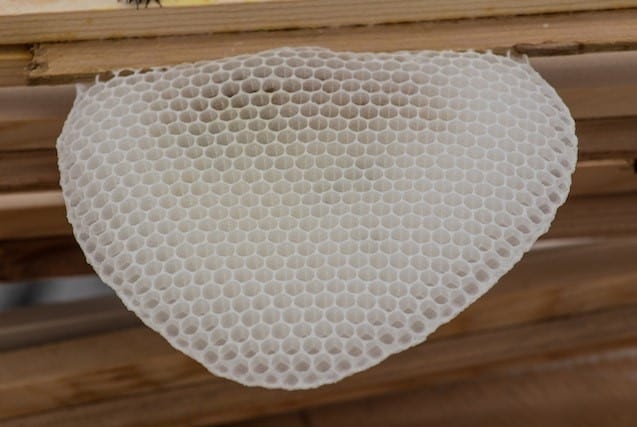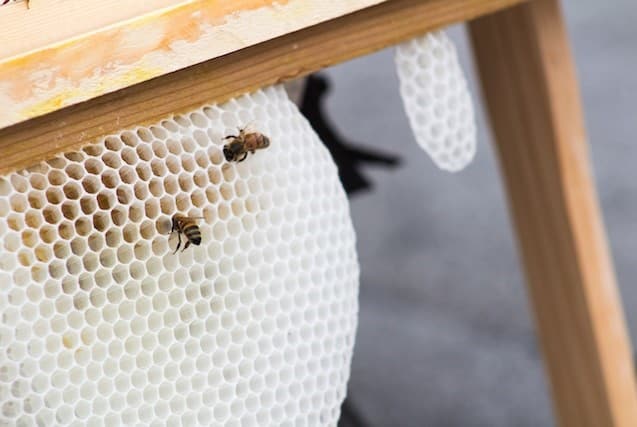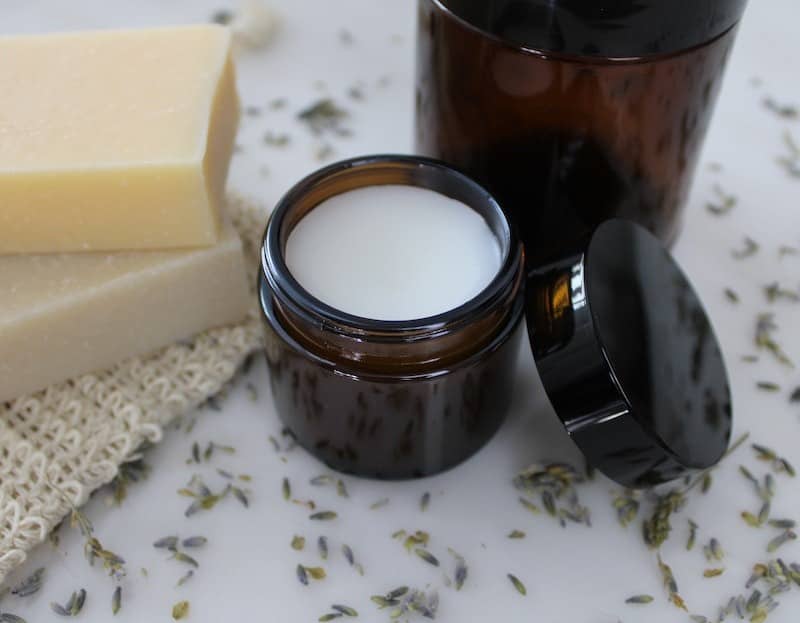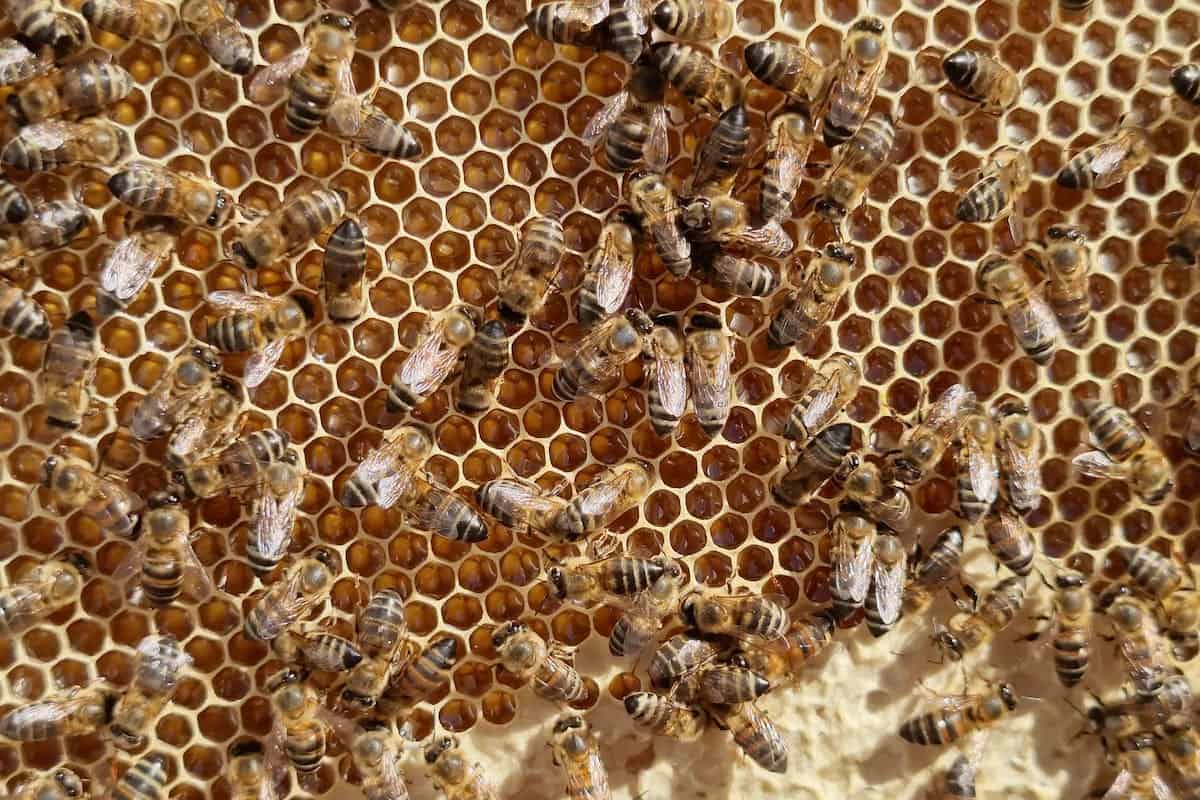Beeswax is a material made of wax secreted by honeybees, primarily to build their honeycomb. The bees use it as a barrier against water and coldness.
It has many other uses, too: candles, soap making (cleansing), skincare products like lotions and lip balms, furniture polish, shoe polishes, and car waxes.
But what exactly is beeswax? Is harvesting it harming our bees? Here are some interesting facts about this natural substance that you may not have known!
What is Beeswax?

In the simplest terms, it is a natural wax formed in the abdominal segments of worker bees, which discard it in or at the hive. Within the hive, workers typically use it for honey storage and protection of larvae.
Chemically, it consists of fatty acids, esters, and various long-chain alcohols. Due to its chemical composition and properties, it has been used in many household and commercial products.
Generally, beeswax is yellow in color. But it can range from light yellow (even almost white) to dark yellow and almost brown.
How is Beeswax Made?
Worker bees create beeswax by secreting it from glands on the underside of their abdomens. The wax scales form a thin sheet that the bee starts depositing in the hive.
Little by little, the sheets gather into small pellets. These pellets form hexagonal cells called honeycomb cells inside the hives for future use.
From the bee’s wax glands, the wax is initially colorless and turns white as it is excreted to build honeycomb cells.
After contamination with pollen, the white beeswax can turn into a shade of yellow, depending on the pollen sources that contaminate it.

How is Beeswax Collected and Processed?
So, how do we, as humans, get access to it? When beekeepers harvest honey, the honey extraction process leaves surplus wax from the combs. Before getting to the honey harvest, beekeepers must first cut and scrape off the wax capping on honeycombs.
These wax cappings are saved for further filtering and rendering.
Beekeepers melt it and store it for future use. Actually, some beekeepers earn more money from wax than from actual honey sales!
Alternatively, you can also use honeycombs and turn them into beeswax. See here how:
The Many Uses of Beeswax
Natural beeswax has many benefits and applications. It is used in many beeswax products.
For candles
Melted beeswax is used in candle-making.
The advantages of beeswax candles are that they are waterproof and long-lasting. It’s also safer than using other types of materials like paraffin wax or soy oil.
Unlike paraffin candles, candles made of beeswax burn brighter. They also do not emit a foul smell.
For skincare
Most people who are into honey production also engage in beeswax production because it is a valuable ingredient in natural products.
For centuries, people have used beeswax due to its anti-inflammatory properties and to soothe skin conditions such as dry skin and eczema. It has antibacterial properties that can help reduce inflammation and has wound-healing benefits too.
Many pharmaceutical products need stiffening agents to maintain their consistency. In these cases, beeswax benefits these products.
White beeswax has been used by many pharmaceutical companies to polish pills and give them a smooth and glossy finish.
Lip products, such as lip balms and lipsticks, contain beeswax as an ingredient, not just to give the product its shape but to help retain moisture on the lips, too.
Beeswax has also been a staple in skincare because not only does it work to spread and cling to creams, it absorbs excess water quickly to provide hydration. You’ll also find this wax as an ingredient in anti-aging products that promote collagen production and lighten the skin!

FAQs
What are the three main types of beeswax?
There are three types of beeswax, namely, Yellow Beeswax, White Beeswax, and Beeswax Absolute.
What is Yellow Beeswax?
Yellow beeswax is pure beeswax taken from the honeycombs from the hive. It is the unprocessed form of beeswax.
Being untreated and in its natural form, it may contain impurities, such as propolis and pollen.
What is White Beeswax?
Treating yellow beeswax would give you white beeswax.
White beeswax is yellow beeswax that has been purified and processed to clean it of impurities.
As yellow beeswax is processed, it loses its yellow color and turns to white, hence the name.
What is Bleached Beeswax?
Yellow and white beeswax are often subjected to bleaching to get bleached wax. In the bleaching process, natural beeswax is subjected to heating in the sun and boiling in clean water.
The process is repeated several times until it reaches the desired color and purity.
In other cases, yellow beeswax treated with alcohol or chemicals such as hydrogen peroxide turns into bleached beeswax.
What is Beeswax Absolute?
Beeswax is further treated with alcohol and solvents to produce beeswax absolute.
It is often found for sale and is mostly used in fragrance products such as soaps and perfumes.
Are Bees Killed for Beeswax?
No, they are not. Bee workers produce an excess of wax naturally.
So, using this wax means we are neither taking away their source of food nor harming them. Instead, only an excess of their production is extracted.
Is Beeswax the Same as Honey?
No, beeswax is not the same as honey.
Technically, beeswax and raw honey are the only two components of a honeycomb. So, while you can’t harvest honey without harvesting the wax, it is still something very different.
Worker honeybees produce this wax themself to build the honeycomb cells that protect their honey.

